In a game filled with complex strategy and tactics, why is controlling the center important in chess?
How can controlling the center of the chess board give you a massive upper hand both offensively and defensively against your opponent?
Why is Controlling the Center Important in Chess?
Controlling the center is the most effective way to gain control of a game. Occupying those 4 squares means being able to attack more squares while restricting pawns, bishops, knights, rooks, and queens from doing the same.
What is Considered the “Center” of the Chess Board?
On your 8 x 8 chess board, the center would be the 4 squares directly in the center of the board, namely d4, e4, d5, and e5.
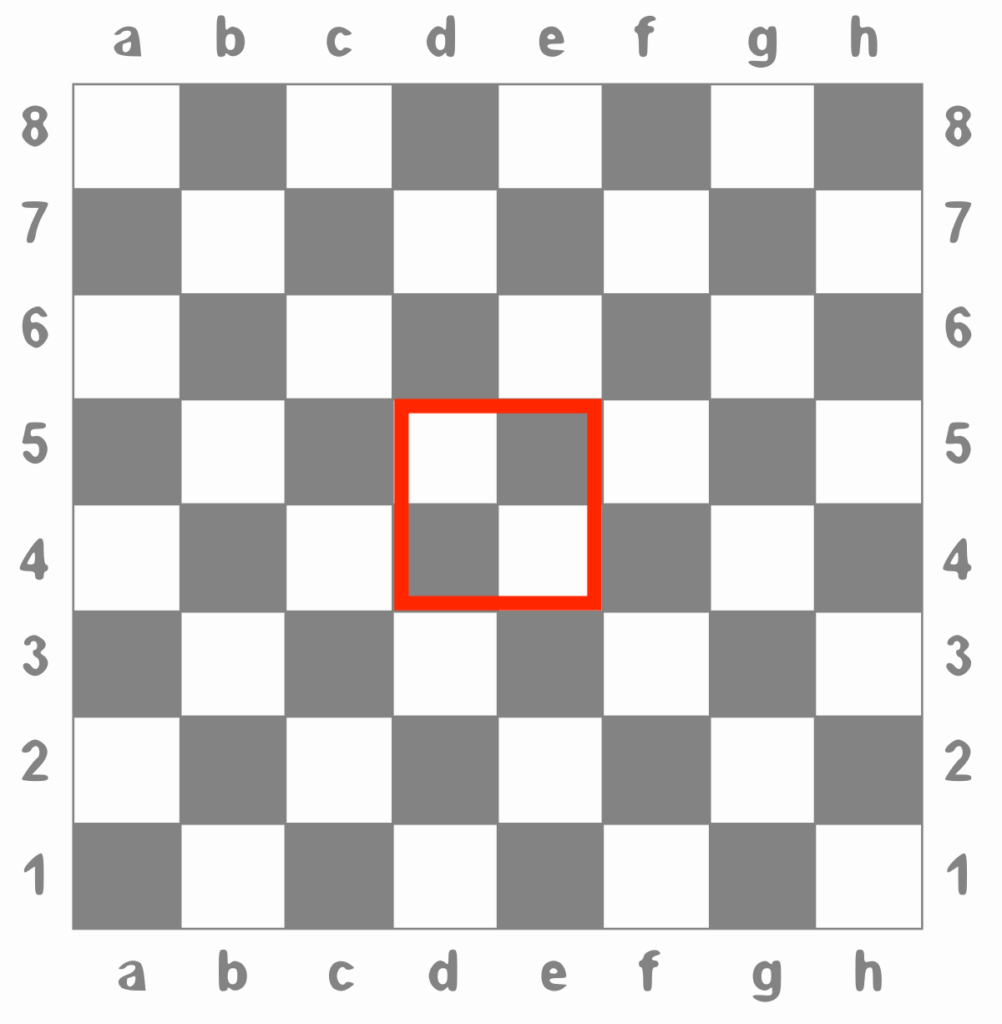
Additionally, consider the squares surrounding the center as important as well. These would be d6, e6, c5, f5, c4, f4, d3, and e3.
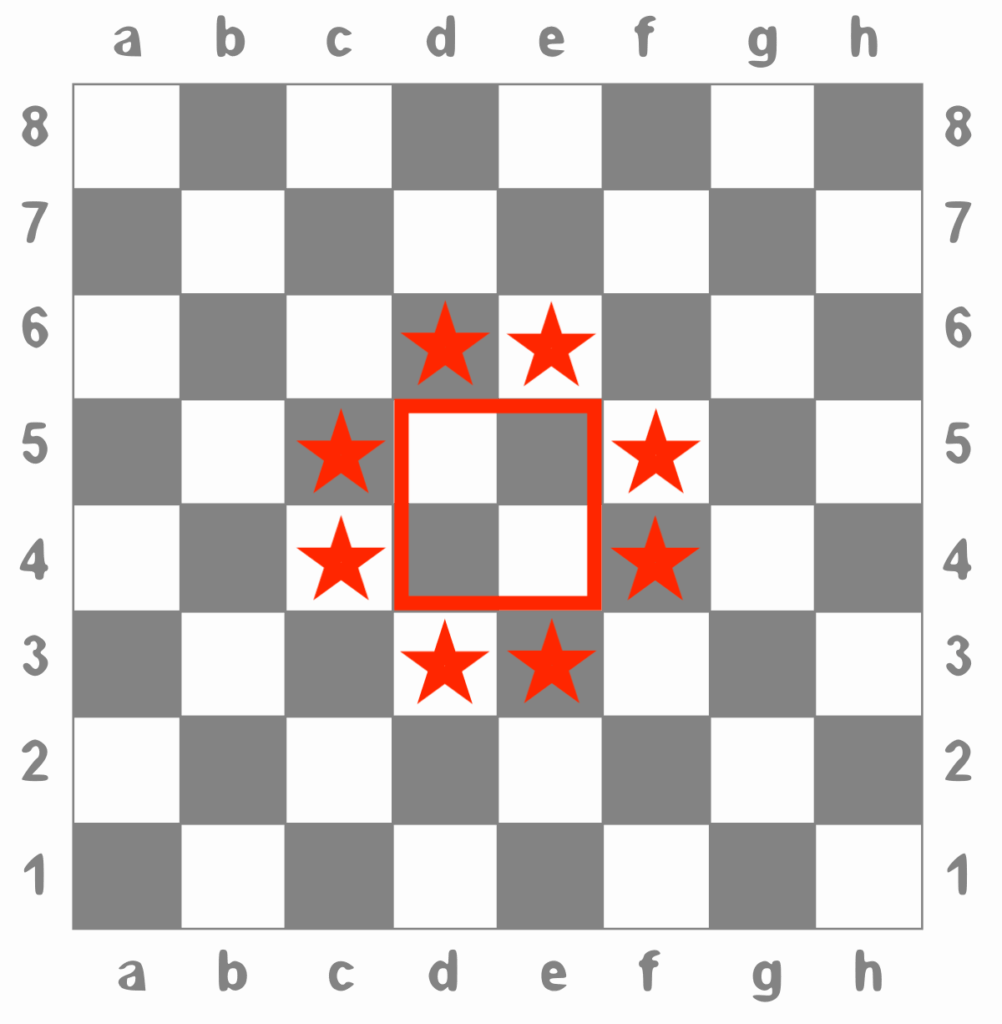
What Does It Mean to “Control the Center”?
Controlling the center means occupying those crucial center squares (and those surrounding the center) with your pieces.
True, the goal of chess is to capture the opponent’s king, not to place as many pieces in the center squares as possible.
However, everything goes through the center! And by controlling the center you take control of prime real estate on the board.
Ever played King of the Hill growing up?
Imagine the center of the chess board was the top of the hill. He who’s at the top has a strategic advantage over all who try to take him out.
Occupying the center squares means having many more options and ways to attack your opponent.
Greater Offensive Mobility
According to the forums at Chess.com, greater offensive mobility ranks as the top reason controlling the center is so important.
There are so many more moves available from the center of the board than there are on the periphery.
More options and potential moves means your pieces have more ways to attack and, even more importantly, your opponent has more squares to defend.
The more potential moves each piece can make, the more squares that piece controls.
For example, a knight placed on e4 has several potential squares it could move to, or control.
Look at the board below and mentally place your knight on e4. Visualize the squares it could move to.
How many moves did you count?
If you counted 8, you’re correct.
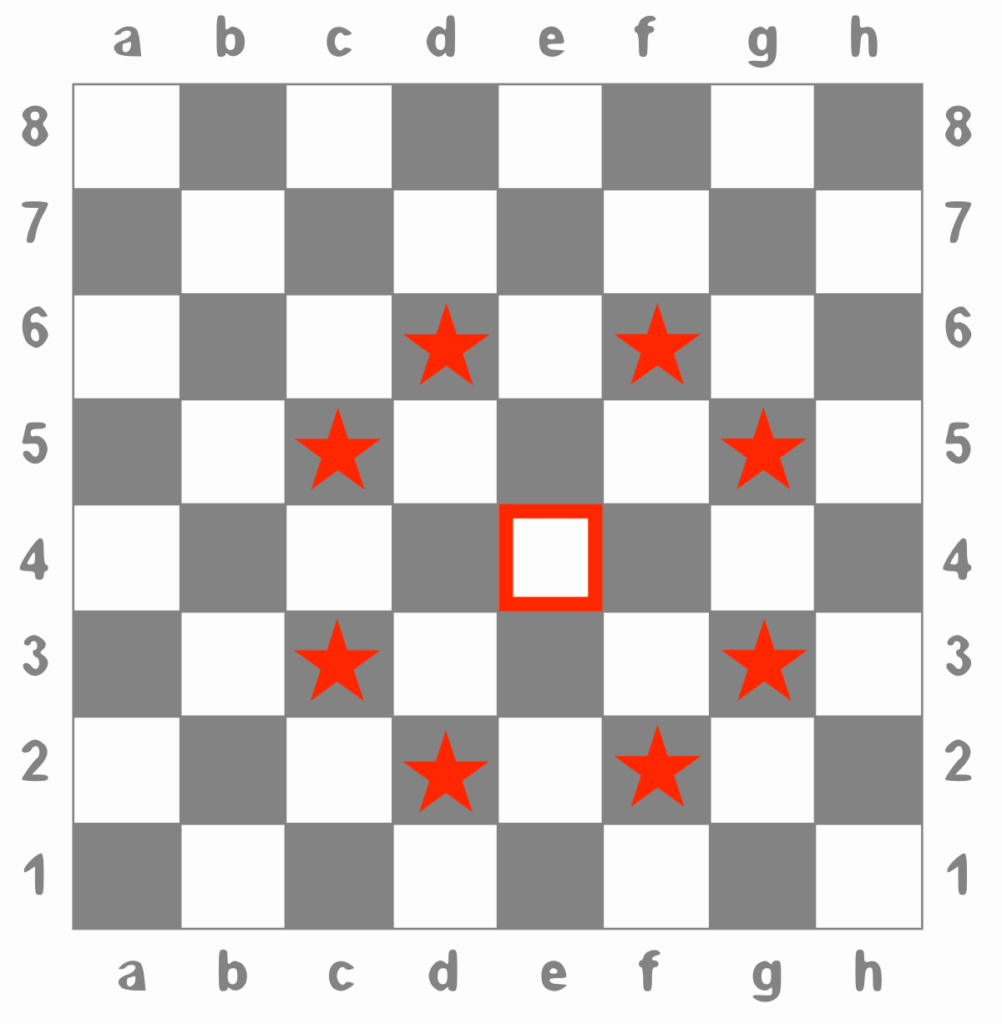
Now replace that knight with a queen. Do the same exercise, placing her on e4, and she has 27 potential controlled squares. A bishop would have 13.
Now let’s try the same exercise but from the periphery. Place your knight at h4.
Being on the edge of the board cuts your knight’s moves in half down to 4!
A queen control at h4 drops from 27 to 21 squares, and a bishop drops down to 7.
Finally, place your knight in the corner at h1. Your knight’s moves are halved yet again, only being able to control 2 squares from the corner.
The queen and bishop still control 21 and 7, respectively.
The rook is the only piece that no matter its placement on the board, still controls the same number of squares at 14.
Easier to Fend Off Attacks
And what about defense?
Occupying the center means being able to fend off not only short moving pieces like pawns, but even long distance attacks by bishops, rooks, and even queens.
Pair this with castling and you’re able to make an attack while simultaneously protecting your king.
Even pawns in those center squares can put a wrench in your opponent’s plans. They not only halt the opposition’s pawns from advancing, but they hold off other pieces as well.
Pay attention the next time your opponent occupies the center. See how controlling those four squares can seemingly cut the board in half!
When I first started playing chess (I’m now slightly addicted) I played very haphazardly. I’d just move and attack and try to be unpredictable.
Sometimes I’d win, many times I’d lose, and I just didn’t have any rhyme or reason to my game
Then I started paying attention to controlling the center. I started making it my goal at the beginning of the game to get 2 pawns into the center.
Guess what? The more I did that, the more games I started to win.
While my opponent struggled to develop his pieces and make an organized attack, I was able to turn my defense into offense and gain an advantage.
Controlling the center, in my opinion, is the quickest and most direct way to improve your chess game.
Which Pieces Should I Use to Control the Center?
Obviously, because pawns are frontline pieces, getting them into the center is a common theme in chess openings.
While some players open with knights jumping into the fray, most will open with center pawns attacking into the middle.
Have you ever considered controlling the center with bishops or knights?
As I stated earlier, when I started making a concerted effort to get 2 pawns into the center, my chess game IMMEDIATELY improved.
Now, just because you get your pieces there first, doesn’t mean they’re going to stay there, right?
You still have to make wise choices when trading pieces and not get caught on the bad end of trades or you’ll quickly lose any advantage you were going for.
As shown in the images above, knights in particular have much more power when they’re in the middle of the board.
Having a combination of pawns and knights in the middle can wreak absolute havoc on an opponent!
Having pieces that are able to attack with 100% of their potential will beat an opponent whose pieces are only using fractions of their potential.
Final Thoughts
You have to take control! Greater offensive mobility and the ability to defend attacks make controlling the center the quickest way to dramatically improve your chess game!
What do you think? Are you looking for a quick and direct way to improve your chess game? Have you tried this with success? How quickly did you notice an improvement?Let me know how you feel in the comments section below! I love reading your questions and comments and I always reply back.
Like This Article? Pin It!
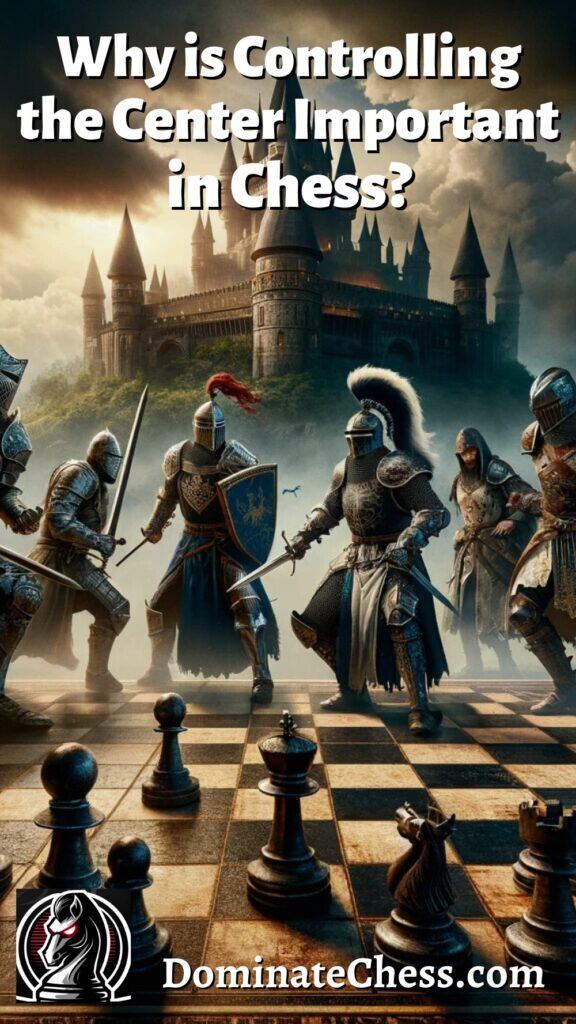


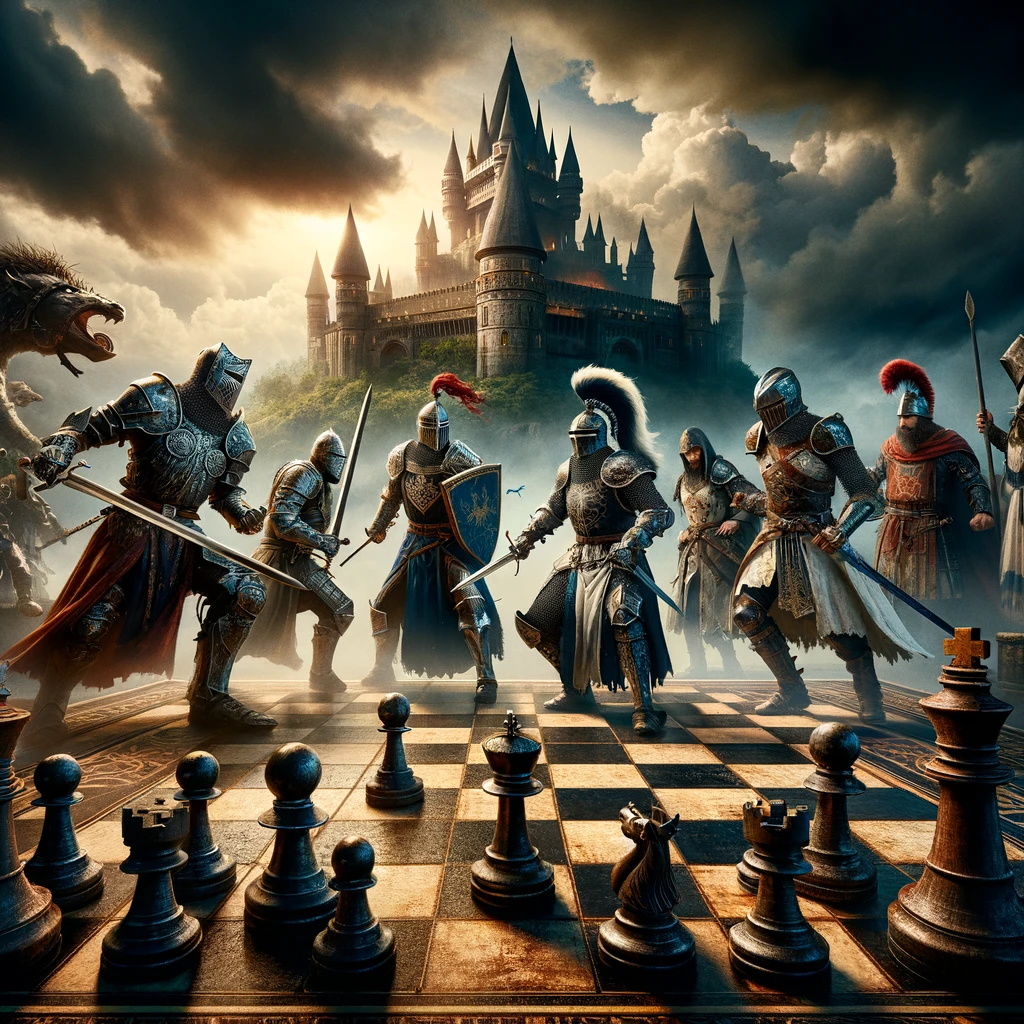
I agree, playing from the center is the easiest way to improve quickly. Thank you for this post.
You’re very welcome!
I’m a pretty offensive style player. I understand the concept of controlling the center, but I’m confused about a couple things. If your opponent knows this too, how can you realistically control all of that when your opponent is trying to do it to? There’s only so many center squares to take control of.
Well that’s what makes the game fun, right? In any game both sides are trying to accomplish the same thing, that’s where offense and defense come together as you both strategize to put your pieces in the best possible spots for both attacking and defending :). Thanks for the comment!
It totally makes sense. I’m fascinated by how much chess is a layered game and how many strategies there are.
I’ll definitely share your whole blog with a few of my friends who are passionate about chess, just like you.
Have a nice day!
Thanks for the comment!
Hi, Im no expert at playing chess, and I only know the pathways of the single figures. I played chess only sometimes but sometimes even I won, and the strategy of conquering the center is new to me. Are there any special moves which I can use to be in the center faster than my opponent, even if I’m black coloured? Thanks
There’s no special moves to get to the center, but just making it a point to get your pawns there can greatly improve your game. When you get them there they act as a block just by occupying the square and can throw a wrench in your opponent’s attack. Practice keeping control of those center squares and see where your game goes!
This is awesome. I love the “king of the hill” analogy that you shared. I like how you showed how controlling the center gives both an offensive and defensive edge.
My 7 year old son is really getting into chess with his buddies (they have a chess obsessed teacher!), and he has even legit beat me! Thanks to you, I now I have a bit more understanding of how to develop my own chess skills further – and also “teach” him something! Prove Mom can still best him. 🙂
haha spectacular! Glad you enjoyed the article! Thanks for the comment!
Ever since I started making an effort to control the center my game has gotten a lot better for sure. Do you think it is a good strategy after controlling the center to play something on the side to distract the opponent? Or does that take away from your attack?
Wael
I’d say to keep the pressure on and keep maintain your control on the center. If you start trying to distract to the periphery you’d actually be playing right into your opponent’s hands and he could gain control of the center. Thanks for the question and comment!
I like the concept of controlling the center of the board, however when you are thinking 3 or 4 moves ahead your ability in doing this , in my opinion, is somewhat limited. Do you use this method and do you find it effective for you?
I’m always looking at ways to improve my game, and although my technique is somewhat different, I will give this a try. How long have you been playing chess for.?
Steve
Thinking 3 or 4 moves ahead is EXACTLY how you control the center. And yes, if you want to improve your game and improve it quickly, controlling the center is about the most surefire direct way to do so. Thanks for the comment!
It’s interesting that I’ve never heard of this concept, not sure if I’ve seen anyone use it before but it does makes sense. Every time I play chess I just simply set a goal to divert the opponent from every essential attacking move I make to dominate while I divide and conquer each of their pieces…but I’ll be sure to put this central strategy to the test next time, seems to have significant benefits in both offence and defense
You’ve never heard of controlling the center?!?! Your game is going to improve DRASTICALLY when you implement this! Get after it!
Thank you for your article. It was a great piece and very helpful. Beautiful illustrated and explained. I want to check out more like this from you and mabe I can beat my grandson, but I doubt it.LOL Your blog was so professional done, it gave me confidence in your authority on the subject matter.
haha thank you so much! and to beat your grandson just make up new rules as you go along he’ll totally fall for it, lol!